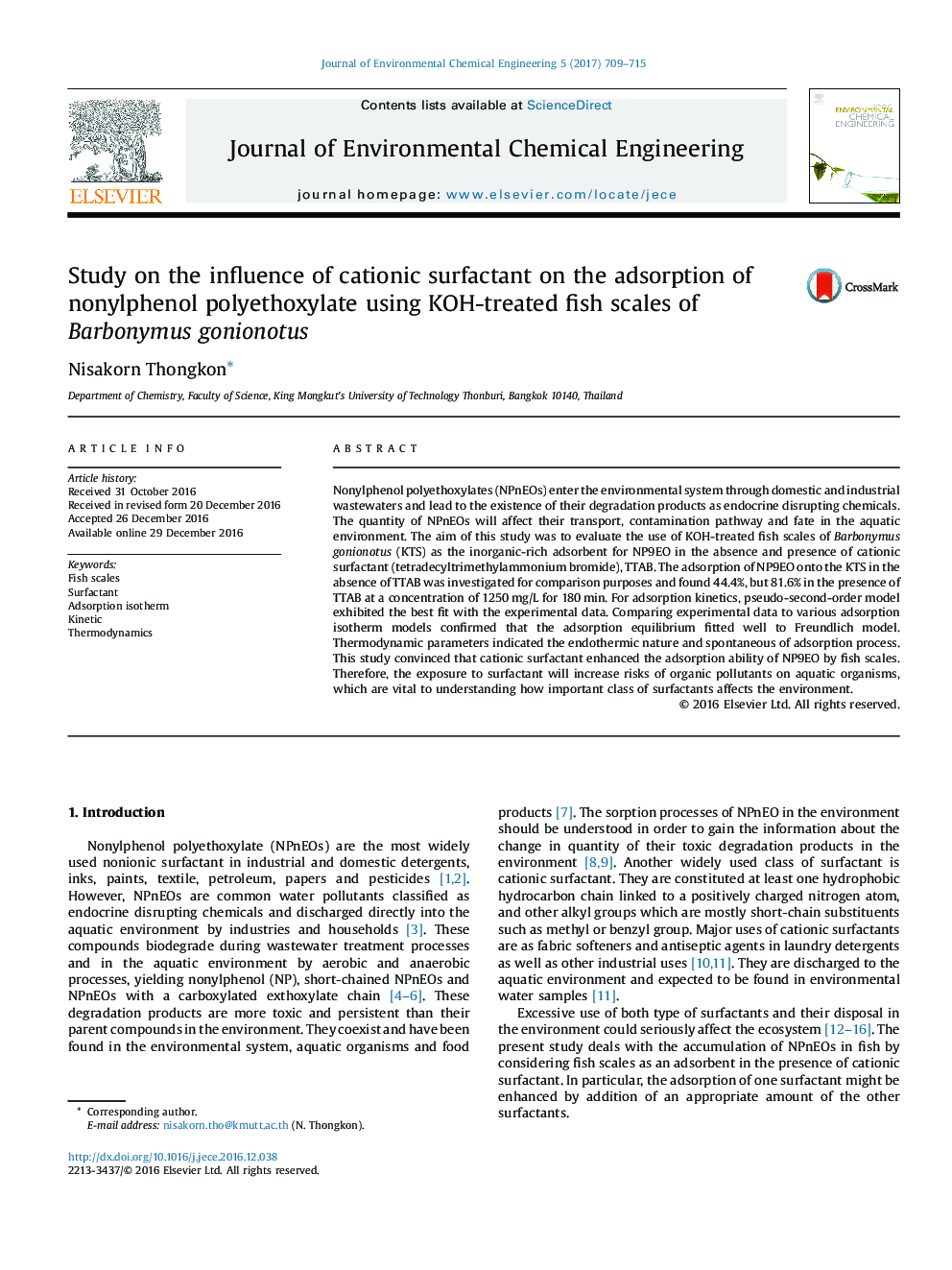| Article ID | Journal | Published Year | Pages | File Type |
|---|---|---|---|---|
| 6477469 | Journal of Environmental Chemical Engineering | 2017 | 7 Pages |
Nonylphenol polyethoxylates (NPnEOs) enter the environmental system through domestic and industrial wastewaters and lead to the existence of their degradation products as endocrine disrupting chemicals. The quantity of NPnEOs will affect their transport, contamination pathway and fate in the aquatic environment. The aim of this study was to evaluate the use of KOH-treated fish scales of Barbonymus gonionotus (KTS) as the inorganic-rich adsorbent for NP9EO in the absence and presence of cationic surfactant (tetradecyltrimethylammonium bromide), TTAB. The adsorption of NP9EO onto the KTS in the absence of TTAB was investigated for comparison purposes and found 44.4%, but 81.6% in the presence of TTAB at a concentration of 1250Â mg/L for 180Â min. For adsorption kinetics, pseudo-second-order model exhibited the best fit with the experimental data. Comparing experimental data to various adsorption isotherm models confirmed that the adsorption equilibrium fitted well to Freundlich model. Thermodynamic parameters indicated the endothermic nature and spontaneous of adsorption process. This study convinced that cationic surfactant enhanced the adsorption ability of NP9EO by fish scales. Therefore, the exposure to surfactant will increase risks of organic pollutants on aquatic organisms, which are vital to understanding how important class of surfactants affects the environment.
